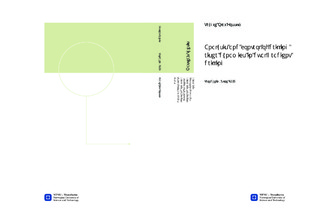| dc.description.abstract | The aim of this thesis is to investigate a dual gradient riser system, adapted for operations in the Gulf of Mexico and subjected to first- and second-order wave forces, current and rig/vessel motion.Deep water drilling in narrow pressure zones pose several challenges for handling well pressure. Using two separate fluid volumes, in what is known as a dual gradient drilling (DGD) solution, the hydrostatic well pressure can be reduced by managing the return flow. To separate these volumes and control the mud return, the riser must accommodate a device known as a rotating control device (RCD). The RCD and the well pressure system extends the capabilities of conventional drilling schemes allowing for operations in deeper water and narrower pressure zones. The two volumes are closed off using a sealing element in the RCD, which holds the differential pressure created by the drilling system. The seal operate in a hostile environment resulting in extensive wear originating from abrasive particles, the rotating drillpipe and dynamic forces from the sheltering riser. The abrasion related to friction contact is strongly coupled with the riser and drillpipe contact and prompt the need for a closer analysis of the forces occurring between them. The riser system and RCD is therefore modelled in SIMA/RIFLEX and a dynamic analysis is carried out to obtain the lateral drillpipe/riser contact forces, indirectly finding the forces affecting the seal element. The analysis results indicate that the lateral force is below 4% of the seal element?s clamp force. The force magnitude is modest and will most likely have no significant impact on the operation. However, local forces and vibrations associated with resonance can create undesirable effects, which over time can lead to fatigue damage of the RCD and its subcomponents.Submerged equipment will be sensitive to range of resonance phenomena originating from the rig motions, second-order wave forces, current and vortex induced vibrations. This will encourage a review of the local dynamics and the potential use of riser control. Motivated by this, a finite element model is developed in Matlab/SIMULINK to study this in more detail. In order to de- tect resonance related vibrations, a modal decomposition model is formulated based on the finite element model. Using the modal model, a weighted estimate of the eigen frequencies active in the response can be provided to evaluate the resonance properties of the riser. To obtain a better understanding of the riser system and the control potential, a dynamic analysis of the models is carried out, focusing on low frequent rig/vessel motion. Both models are throughly verified using the commercial program RIFLEX, to ensure the sufficient accuracy. Inspired by the results from the analysis, control strategies based on manipulation of the resonance properties (modal con- trol) of the riser are examined, applied to a riser management system framework. The purpose of modal control is to increase safety margins and the operational economy, e.g. by reducing the time spent suspended because of seal element exchange or the risk for well head fatigue. Four different strategies based on manipulation of tension and position are proposed. Followed by a qualitative evaluation of the practical aspects, indicating that setpoint chasing and tension control are the most effective and attainable strategies available.The main contributions in this thesis are assessment of the lateral contact force associated with a deep water pipe-in-pipe dual gradient riser in the Gulf of Mexico, the development and verification of a extensive riser model using Matlab and SIMULINK, and the formulation of modal riser control for resonance vibrations in deep water drilling risers. | nb_NO |

